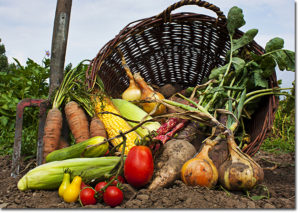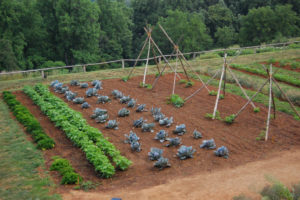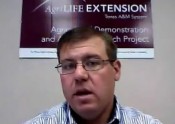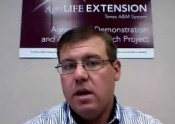
Home gardening continues to grow in popularity. On e of every three families does some type of home gardening, according to conservative estimates, with most gardens located in urban areas. Texas gardeners can produce tasty, nutritious vegetables year-round. To be a successful gardener you will need to follow a few basic rules and make practical decisions.
e of every three families does some type of home gardening, according to conservative estimates, with most gardens located in urban areas. Texas gardeners can produce tasty, nutritious vegetables year-round. To be a successful gardener you will need to follow a few basic rules and make practical decisions.
Selecting a garden site is extremely important. The ideal garden area gets full or nearly full sunlight and has deep, well-drained, fertile soil. The gardens should be near a water outlet but not close to competing shrubs or trees. However, if you modify certain cultural practices and select the right crops, almost any site can become a highly productive garden.
One of the first things you must do is decide what vegetables to grow. You will want to grow vegetables that return a good portion of nutritious food for the time and space they require. Vine crops such as watermelons, cantaloupes, winter squash and cucumbers need large amounts of space, but if you plant them near a fence or trellis you may need less space for vine crops. Plant the vegetables your family will enjoy most. Resist the urge to plant more of any particular vegetable than you need unless you plan to preserve the surplus.
A gardener needs a plan just as an archi tect does. Careful planning lessens gardening work and increases the return on your labor. Long-term crops require a long growing period. Plant them where they won’t interfere with the care and harvesting of short-term crops. Plant tall-growing crops (okra, staked tomatoes, pole beans, sweet corn) on the north side of the garden where they will not shade or interfere with the growth of low-growing crops such as radishes, leaf lettuce, onions and bush beans. Group crops according to their rate of maturity so a new crop can be planted to take the place of another as soon as it is removed. When you plant a new crop, it should be totally unrelated to the crop it is replacing. This is called crop rotation. Crop rotation helps prevent the buildup of diseases and insects. For example, follow early beans with beets, squash or bell peppers.
tect does. Careful planning lessens gardening work and increases the return on your labor. Long-term crops require a long growing period. Plant them where they won’t interfere with the care and harvesting of short-term crops. Plant tall-growing crops (okra, staked tomatoes, pole beans, sweet corn) on the north side of the garden where they will not shade or interfere with the growth of low-growing crops such as radishes, leaf lettuce, onions and bush beans. Group crops according to their rate of maturity so a new crop can be planted to take the place of another as soon as it is removed. When you plant a new crop, it should be totally unrelated to the crop it is replacing. This is called crop rotation. Crop rotation helps prevent the buildup of diseases and insects. For example, follow early beans with beets, squash or bell peppers.
Plant your garden as early as possible in the spring so the vegetables will grow and mature during ideal conditions. Some crops are purchased in containers which can be used for planting. When transplanting plants such as tomatoes or peppers, use a starter solution. Purchase starter solution at a nursery or make your own by mixing 2 to 3 cups of fertilizer (such as 10-20-10) in 5 gallons of water. Use the lower rate on light, sandy soils. Pour 1 to 2 pints of starter solution (depending on the plant size) into each transplant hole before planting. This keeps the plants from drying out and gives the young, growing plants the nutrients they need.
When planting seeds, a general rule of thumb is to cover the seed two to three times as deep as its width. This is especially true for big seeds such as green bean, sweet corn, cucumber, cantaloupe, and watermelon. Smaller seeds such as carrot, lettuce or onion can be planted about ¼ to ½ inch deep. Plant seeds fairly thickly; once they have sprouted you can thin plants to an optimum stand. After planting seeds, do not let the soil become so dry that develops a crust, but do not overwater either.

I hope these suggestions help you with starting a spring home garden. I will follow up with tips on weed control, mulching and pest control in my next post. If you have any questions about gardening please feel free to contact me at:
bubba.lamolinare@ag.tamu.edu
806-456-2263
* Information provided by Texas A&M AgriLife Extension Horticulturist Joseph Masabni.







